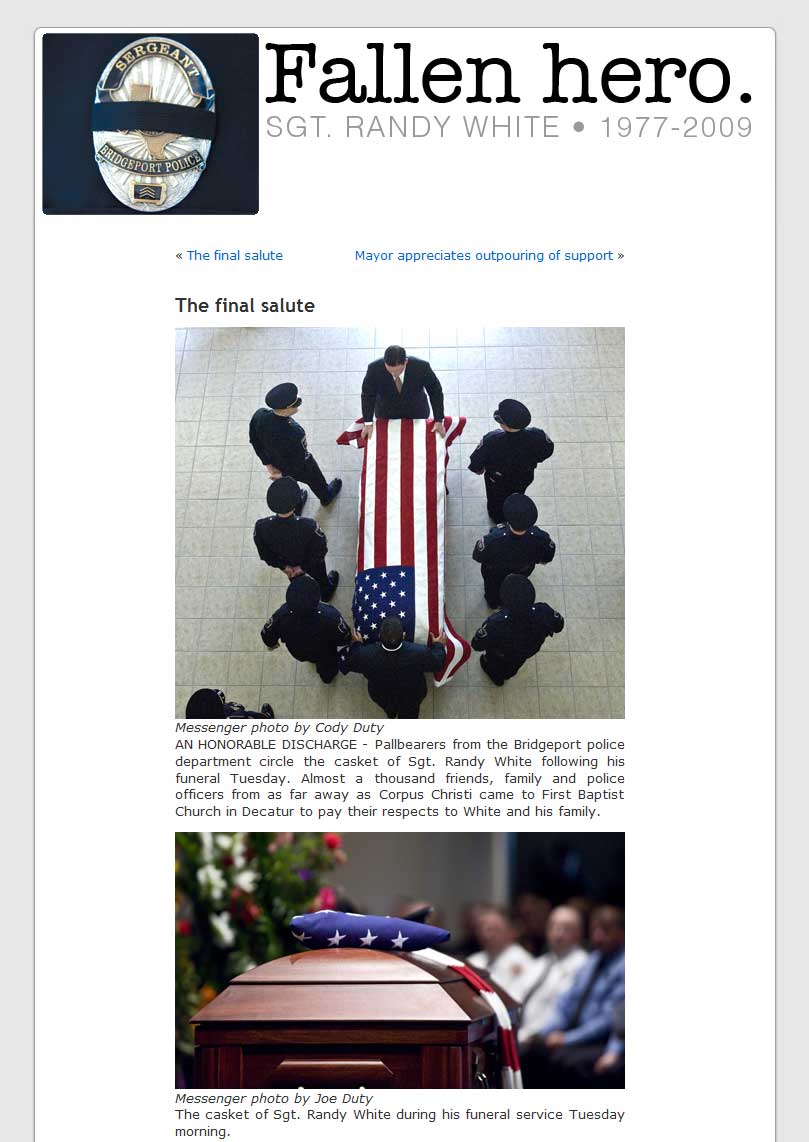One of our functions here at the Center is to be “surrogate readers” for Texas community journalists. Keeping up with the fast-changing world of community journalism has never been harder, especially since pretty much everyone now wants in on the act: Even The New York Times is doing community journalism, the number of Internet-only startups is growing by the day, and community journalism is now the “hot” area in mass communications.
But you have a paper to put out, and a Website to maintain. A few of you may even have a life.
So we’ll help you keep up with what folk around the nation are saying about our field — about community journalism specifically and the wider world of newspapers and news Websites in general.
Let’s get started.
Adweek reports that the Atlanta Journal-Constitution has rolled out a new “Unplug. It’s Sunday” campaign to promote the traditional Sunday newspaper as a refuge from the constant buzzing and beeping of smart phones, instant messages and e-mail that marks the modern workweek.
AJC‘s campaign, which runs until the end of the year and will cost more than $1 million, coincides with a recent redesign of the paper.
The marketing guru who designed the campaign put it this way: “It’s about how to reposition the newspaper. We came up with the idea as a counterpoint to the digital cacophony that exists in everyone’s lives. Sunday is the day to relax and do something different than you do the rest of the week.”
Two TV spots show the hectic whirl of the digital workweek, complete with ringing cell phones, instant messenger notifications, conference calls and TV screens filled with digital crawls. The ads then show a couple relaxing on their sofa and reading the paper. A voiceover says, “Unplug. It’s Sunday. Discover the new, totally redesigned AJC Sunday.”
The paper’s weekday and Saturday print circulation has dropped nearly 20 percent in the past year, according to the Audit Bureau of Circulations. The Sunday edition did better, falling about 7 percent to 462,000. Six weeks ago, the paper cut 30 percent of its news staff.
The new marketing effort reflects the dilemma so many newspapers face. There is a shift in reading patterns, away from print editions toward Websites. But newspapers make far less from their Web readers — at least at this point — than from their print editions.
If you’d like to see the commercials for the new campaign, go here.
It sounds fascinating. Sort of like the beer commercials that aren’t selling the brew, but the good times you can have with friends when you drink it. Or the car company that isn’t selling a car, but the image you will project when you drive it. The AJC is not selling a newspaper, but a throwback to simpler times.
Major metro to debut “citizen journalism”
You have probably been using people in your community for some time as writers — people who don’t work for you, people who haven’t been trained a journalists.
So guess what? Major metros have now discovered that folk not on the regular payroll can add significantly to their news coverage. They even have a name for it: citizen journalism. I did a Google search on “citizen journalism” this morning; it yielded 4.17 million hits.
One of the latest players in this game is The Washington Times. Their citizen journalism project will debut next week. It will feature one full print page every day of news stories written by average citizens in local communities surrounding Washington, D.C.
The Times‘ citizen journalism efforts will focus on six communities within the larger Washington area: academia on Monday, the Maryland and Virginia suburbs on Tuesday, the District on Wednesday, local military bases on Thursday, faith communities on Friday and the charitable and the public service community on Sunday.
The citizen journalists’ work will be showcased in the A-section as an additional page of metro coverage and will provide a natural complement to the work of the newspaper’s reporters and editors.
Each citizen journalist is provided a set of rules for their reporting and newswriting, as well as copies of The Times‘ policies governing ethics, anonymous sources and other journalistic standards.
If you’re interested in further developing citizen journalism in your paper, you should read Steve Outing’s article, “The 11 Layers of Citizen Journalism,” in Poynter Online. Outing’s article prominently mentions Bluffton Today, the South Carolina newspaper whose staff the Center brought in for one of our Web workshops last year.
If you read Outing and you want to know more, get Jack Driscoll’s book Couch Potatoes Sprout: The Rise of Online Community Journalism. This is no philosophical examination of media trends – it shows how real groups of people, including senior citizens, all without a background in journalism, have put together their own successful online newspapers. Don’t let this trend sneak up on you – it may well be a significant part of all our futures.
WSJ editor offers advice on paid content
Zachary Seward wrote a piece for the Nieman Lab at Harvard where he passed along some tips for charging for online content. The ideas were those of Alan Murray, executive editor of the Wall Street Journal Online. Some of those ideas are worth repeating:
- The best model is a mix of paid and free content. Don’t just assume your only options are all paid content vs. no paid content.
- You can’t charge for exclusives that will just be repeated elsewhere. Murray explained, “If it’s a big news story, if we report a takeover and — we could hold that behind the pay wall, but if we do, Business Week or someone else will simply write a story saying ‘The Wall Street Journal is reporting x,’ and they’ll get all the traffic. Why would we do that?” So they drop the pay wall, “and take the traffic ourselves, thank you very much,” Murray said.
- Don’t charge for the most popular content on your site. Items with broad appeal are better used to build traffic that can be turned into advertising revenue.
- Content behind a pay wall should appeal to niches. For example, a local newspaper could consider charging for coverage of high school sports. “To the people who want to read it,” he said, “they really want to read it because maybe their kids are involved. Maybe they’re willing to pay for that or maybe there’s a photography service that’s connected to that where you can download pictures of your kids or of the game. But only if you’re a subscriber.”





